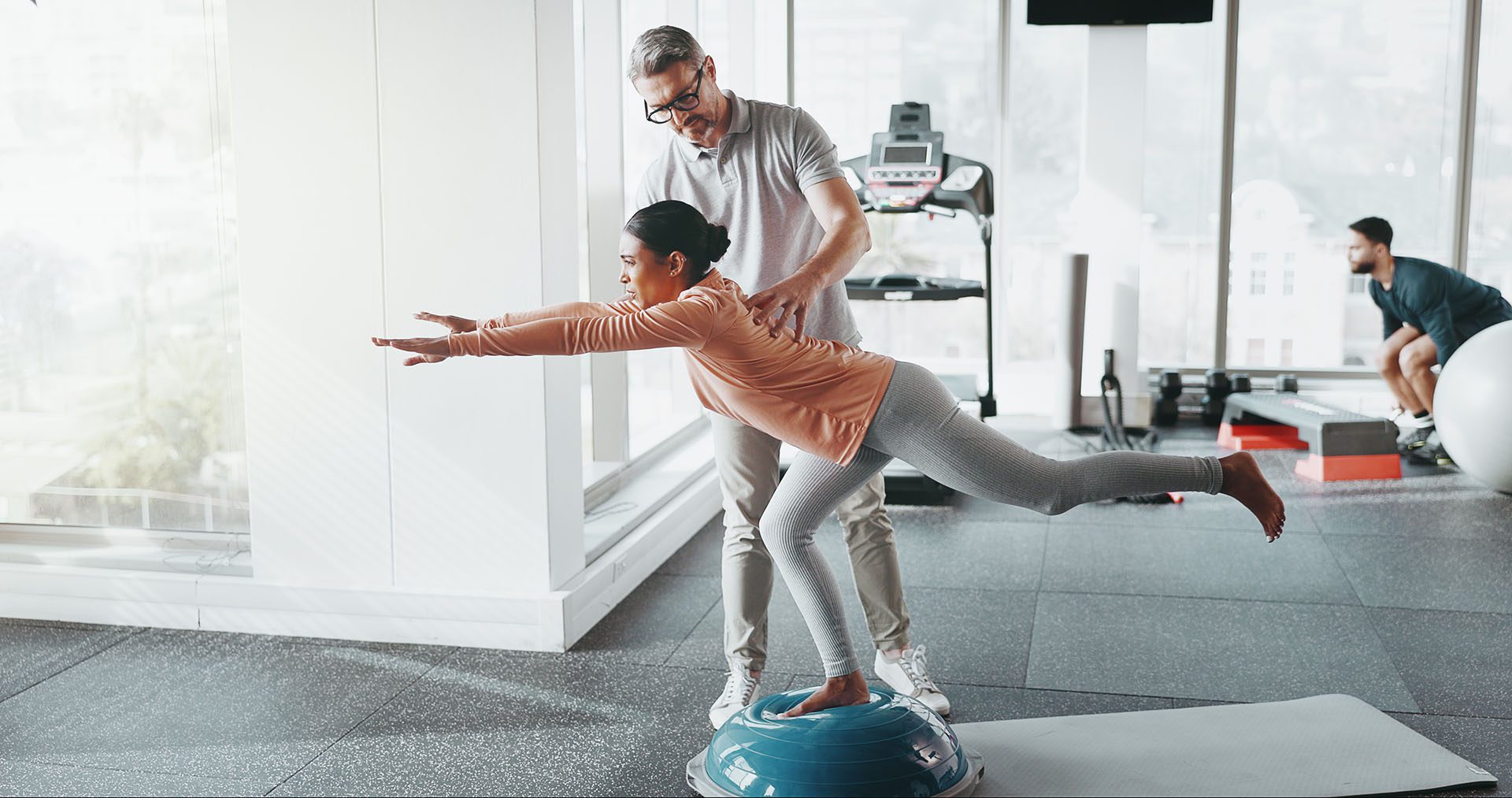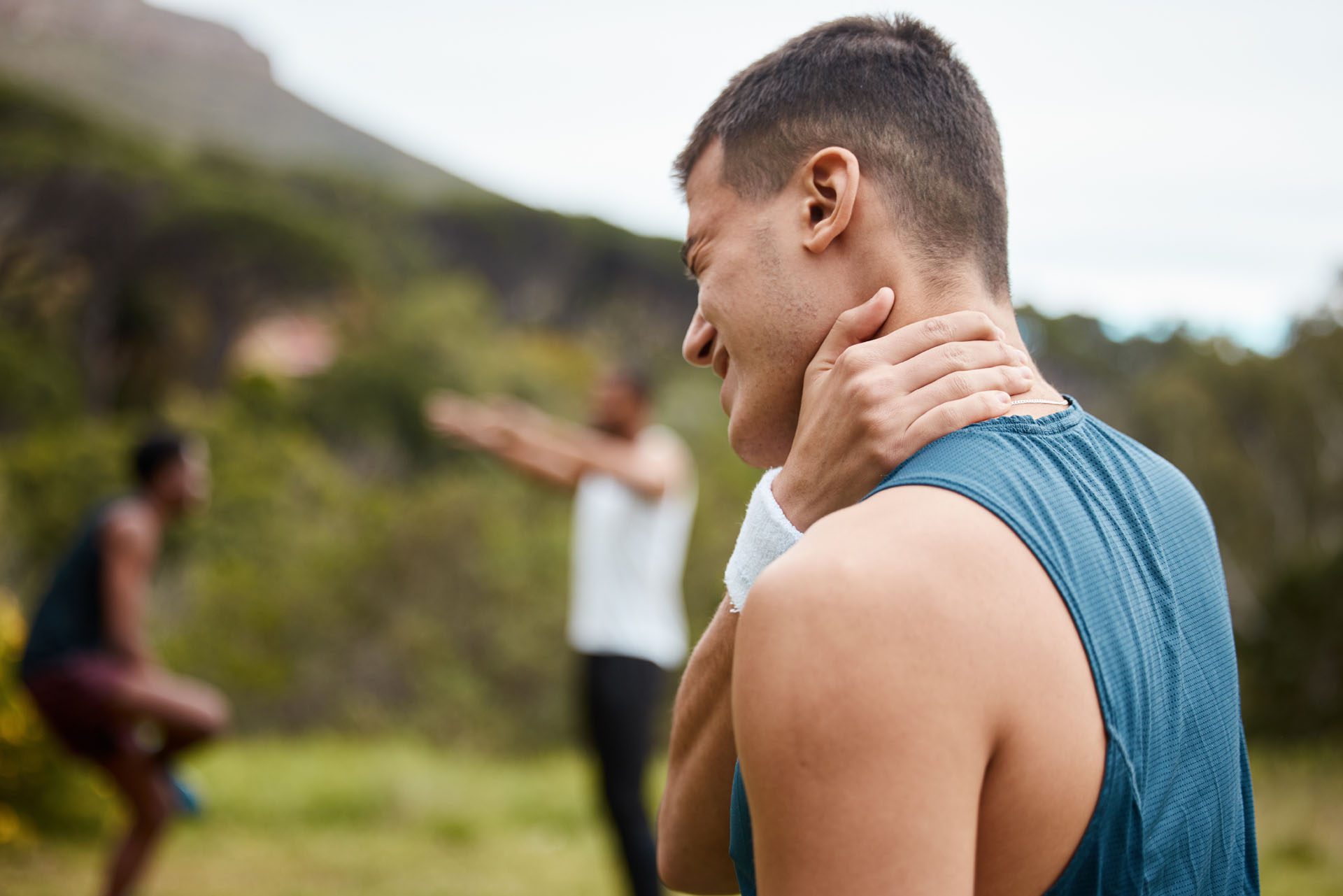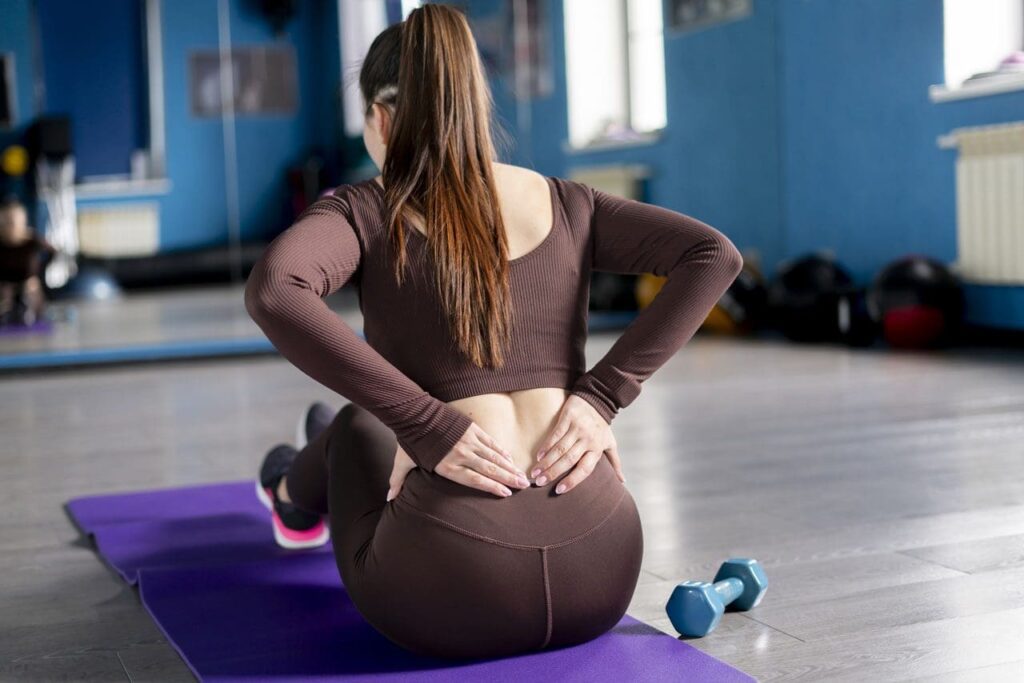Recovering from a Motor Vehicle Accident with Chiromed’s Integrative Care

Motor vehicle accidents (MVAs) can leave you with more than just a damaged car—they can cause physical injuries and emotional stress that disrupt your life. Whether it’s a minor collision or a major crash, the sudden forces can lead to musculoskeletal and nerve injuries, chronic back and neck pain, or other challenges. At Chiromed, we believe in a holistic, patient-centered approach to recovery. Our team in [insert location] combines physical therapy, chiropractic care, acupuncture, and integrative medicine to help you heal and reclaim your health. This blog post explores how Chiromed’s tailored treatments address MVA-related injuries, with insights from Dr. Alexander Jimenez, a leading chiropractor and nurse practitioner whose expertise informs our comprehensive care model.
Understanding Motor Vehicle Accident Injuries
MVAs can cause a range of injuries, from mild strains to severe trauma. The impact of a crash—whether rear-end, side-impact, or head-on—can jolt your body, damaging muscles, ligaments, nerves, and bones. Common injuries include:
- Whiplash: A neck injury from rapid head movement, often in rear-end crashes, causing pain, stiffness, and headaches.
- Back and Neck Pain: Strains, sprains, or herniated discs in the spine can lead to chronic discomfort.
- Nerve Damage: Pinched or irritated nerves may cause numbness, tingling, or sharp pain in limbs.
- Soft Tissue Injuries: Tears in muscles or tendons can limit movement and cause ongoing pain.
- Fractures: Broken bones, like ribs or wrists, are common in high-impact collisions.
Some injuries, like soft tissue damage, may not show symptoms right away, appearing hours or days later. Without treatment, these can become chronic, affecting your mobility and quality of life. At Chiromed, we stress early intervention to catch hidden injuries and prevent long-term issues.
Why Early Care Matters
Seeking care soon after an MVA is critical, even if you feel okay. Hidden injuries, such as microtraumas, can worsen over time, impacting spinal alignment and nerve function. Chiromed’s team uses advanced diagnostics to identify these issues early, ensuring a faster, safer recovery. Dr. Alexander Jimenez notes, “Undetected microtraumas from even minor accidents can compound over time, affecting spinal alignment and nervous system function” (Jimenez, 2025).
References
Jimenez, A. (2025). Personal injury chiropractic care for auto injuries. Retrieved from https://chiropracticscientist.com/personal-injury-chiropractic-care-auto-injuries/
Synergy Rehabilitation. (2024). Physical therapy after auto accident. Retrieved from https://synergyrehabinc.com/physical-therapy-after-auto-accident/
Chiromed’s Physical Therapy for MVA Recovery
At Chiromed, physical therapy (PT) is a key part of MVA recovery. Our therapists create personalized plans to restore movement, reduce pain, and build strength, tailored to your specific injuries. By addressing both symptoms and causes, we help you get back to your daily routine.
Our Physical Therapy Techniques
Chiromed’s physical therapy includes a variety of methods to promote healing:
- Stretching Exercises: Gentle stretches ease muscle tension and improve flexibility, helping with whiplash or lower back pain.
- Range of Motion (ROM) Exercises: Movements like shoulder circles restore joint mobility and reduce stiffness (Results Physiotherapy, 2023).
- Strengthening Exercises: Core exercises, such as pelvic tilts, support the spine and prevent re-injury.
- Manual Therapy: Hands-on techniques, like joint mobilization or soft tissue massage, relieve pain and improve mobility (Head2Toe Care, 2024).
- Specialized Modalities:
- Aquatic Therapy: Water-based exercises reduce joint stress, ideal for severe pain or limited mobility.
- Cold Therapy: Ice packs reduce inflammation and numb pain in early recovery stages.
- Ultrasound Therapy: Sound waves promote deep tissue healing, easing pain and swelling (Wright Physical Therapy, 2024).
Benefits of Chiromed’s Physical Therapy
Our PT approach offers:
- Pain Relief: Targeted exercises reduce discomfort without heavy reliance on medications.
- Better Mobility: Stretching and ROM exercises restore flexibility.
- Chronic Pain Prevention: Early care stops injuries from becoming long-term problems.
- Stronger Body: Strengthening exercises protect against future injuries.
- Customized Plans: Treatments are tailored to your unique needs.
Chiromed’s therapists work closely with our chiropractors and other specialists to ensure a cohesive recovery plan.
References
Head2Toe Care. (2024). Manual therapy after a motor vehicle accident. Retrieved from https://head2toecare.com/manual-therapy-after-a-mva/
Results Physiotherapy. (2023). Physical therapy exercises after a car accident. Retrieved from https://www.resultspt.com/blog/posts/physical-therapy-exercises-after-a-car-accident
Wright Physical Therapy. (2024). Advance physical therapy near me. Retrieved from https://wrightpt.com/advance-physical-therapy-near-me/
Synergy Rehabilitation. (2024). Physical therapy after auto accident. Retrieved from https://synergyrehabinc.com/physical-therapy-after-auto-accident/
Physical Therapy Exercises at Chiromed
Chiromed’s physical therapy exercises target MVA injuries to promote healing and restore function. Here are some examples, explained simply for our patients.
Neck and Whiplash Exercises
Whiplash is a frequent MVA injury, causing neck pain and stiffness. Try these:
- Chin Tucks: Sit or stand straight. Pull your chin back toward your neck, creating a double chin. Hold for 5 seconds, repeat 10 times. This strengthens neck muscles.
- Neck Rotations: Slowly turn your head right, then left, holding each side for 2-3 seconds. Repeat 10 times per side to improve mobility.
- Shoulder Circles: Roll your shoulders forward 10 times, then backward 10 times. This eases neck and shoulder tension (Results Physiotherapy, 2023).
Back Pain Exercises
Back pain from strains or disc issues can be relieved with:
- Pelvic Tilts: Lie on your back, knees bent, feet flat. Tighten your stomach and press your lower back into the floor. Hold 5 seconds, repeat 10-15 times. This supports the spine.
- Cat-Cow Stretch: On hands and knees, arch your back up (cat), then dip it down (cow). Repeat 10 times for spinal flexibility.
- Bridges: Lie on your back, knees bent. Lift your hips, squeezing your glutes. Hold 5 seconds, repeat 10-15 times to strengthen the lower back (B Physical Therapy, 2024).
Core Strengthening
Strong core muscles stabilize the spine, reducing injury risk:
- Plank: Prop up on elbows and toes, keeping a straight line. Hold 10-30 seconds, repeat 3 times.
- Bird Dog: On hands and knees, extend right arm and left leg, hold 5 seconds, switch sides. Repeat 10 times per side.
- Dead Bug: Lie on your back, arms and legs raised. Lower right arm and left leg, keeping back flat. Switch sides, repeat 10 times (PTSM, 2024).
Safety First
Always follow your Chiromed therapist’s instructions. Start slowly, stop if you feel pain, and wait at least 72 hours post-accident before exercising to allow your body to stabilize (Sports PT Centers, 2023).
References
B Physical Therapy. (2024). Building strength after injury: Guide to recovery with physiotherapy. Retrieved from https://www.bphysicaltherapy.com/blog/2024/building-strength-after-injury-guide-to-recovery-with-physiotherapy.html
PTSM. (2024). Oh my aching back! Retrieved from https://ptsmc.com/oh-my-aching-back/
Results Physiotherapy. (2023). Physical therapy exercises after a car accident. Retrieved from https://www.resultspt.com/blog/posts/physical-therapy-exercises-after-a-car-accident
Sports PT Centers. (2023). How to start exercising following a motor vehicle accident. Retrieved from https://sportsptcenters.com/how-to-start-exercising-following-a-motor-vehicle-accident/
Chiropractic Care at Chiromed
Chiromed’s chiropractic care is a cornerstone of MVA recovery, offering non-invasive, drug-free solutions for whiplash, back pain, and nerve issues. Our chiropractors focus on restoring your body’s natural alignment to promote healing.
How It Works
Our chiropractors use spinal adjustments and manual techniques to correct misalignments (subluxations) that cause pain and limit mobility. By realigning the spine, we relieve nerve pressure, reduce inflammation, and improve function. Dr. Jimenez explains, “Chiropractic therapy provides a non-invasive, holistic approach to addressing these injuries at their root cause” (Jimenez, 2024).
Techniques include:
- Spinal Adjustments: Precise movements to realign the spine.
- Soft Tissue Therapy: Massage or myofascial release to ease muscle tension.
- Rehabilitative Exercises: Stretching and strengthening to support recovery.
Benefits of Chiromed’s Chiropractic Care
- Pain Relief: Adjustments reduce nerve irritation and muscle tension.
- Improved Mobility: Realignment restores joint function.
- Less Inflammation: Enhanced blood flow reduces swelling.
- Holistic Wellness: We address the whole body for lasting health.
Chiromed integrates chiropractic care with advanced diagnostics, like X-rays, to ensure precise treatment plans tailored to your needs.
References
Jimenez, A. (2024). Chiropractic accident recovery care after an injury. Retrieved from https://healthcoach.clinic/chiropractic-accident-recovery-care-after-injury/
Jimenez, A. (2025). Board certified nurse practitioner: Expert care. Retrieved from https://dralexjimenez.com/
Nurse Practitioners at Chiromed
Our nurse practitioners (NPs) play a vital role in MVA care, offering medical expertise to complement our holistic therapies. They ensure comprehensive assessments and coordinate your recovery plan.
NP Contributions
Chiromed’s NPs, inspired by Dr. Jimenez’s dual-scope model, provide:
- Thorough Assessments: Evaluating symptoms and ordering tests like MRIs or X-rays to detect nerve damage or systemic issues.
- Care Coordination: Working with chiropractors and therapists for a unified treatment plan.
- Medication Management: Prescribing minimal medications for pain or inflammation when needed.
- Legal Support: Providing detailed medical reports for personal injury claims.
Our NPs bridge medical and holistic care, ensuring all aspects of your health are addressed.
References
Jimenez, A. (2025). Nurse practitioner injury support in MVA cases. Retrieved from https://sciatica.clinic/nurse-practitioner-injury-support-mva-cases/
Jimenez, A. (2024). Injury medical & chiropractic clinic. Retrieved from https://elpasobackclinic.com/
Acupuncture at Chiromed
Acupuncture, a traditional Chinese medicine technique, is a powerful complement to Chiromed’s MVA treatments. By inserting thin needles into specific points, we relieve pain and promote healing.
How Acupuncture Helps
Acupuncture stimulates endorphin release, improves blood flow, and calms the nervous system, helping with:
- Pain Reduction: Eases discomfort in the neck, back, or limbs.
- Inflammation Control: Reduces swelling in injured tissues.
- Stress Relief: Balances the nervous system to reduce anxiety.
- Enhanced Recovery: Boosts the effects of chiropractic and physical therapy (Jimenez, 2024).
Chiromed combines acupuncture with other therapies for optimal results, such as using it alongside spinal adjustments for chronic back pain.
References
Jimenez, A. (2024). Integrative MVA recovery strategies for lasting health. Retrieved from https://dralexjimenez.com/integrative-mva-recovery-strategies-lasting-health/
Governors Park Chiropractic. (n.d.). Acupuncture for treating car accident injuries. Retrieved from https://governorsparkchiropractic.com/acupuncture-treating-car-accident-injuries/
Chiromed’s Integrative Medicine Approach
At Chiromed, integrative medicine combines conventional and complementary therapies to treat the whole person—body, mind, and lifestyle. This approach ensures comprehensive MVA recovery.
Our Integrative Methods
- Chiropractic Care: Restores spinal alignment.
- Physical Therapy: Builds strength and mobility.
- Acupuncture: Reduces pain and inflammation.
- Nutrition Counseling: Anti-inflammatory diets support healing.
- Stress Management: Mindfulness techniques address emotional trauma.
- Functional Medicine: Identifies metabolic or hormonal issues affecting recovery.
Inspired by Dr. Jimenez, Chiromed utilizes functional medicine tools, such as blood panels, to address the root causes of pain, ensuring long-term wellness (Jimenez, 2024).
Benefits of Integrative Medicine
- Root Cause Treatment: Targets underlying issues.
- Long-Term Health: Lifestyle changes prevent future injuries.
- Faster Healing: Combined therapies accelerate recovery.
- Emotional Support: Holistic care boosts mental resilience.
References
Jimenez, A. (2024). Functional post-accident healing for athletes. Retrieved from https://healthcoach.clinic/functional-post-accident-healing-athletes/
Jimenez, A. (2025). Motor vehicle accident recovery and integrative care. Retrieved from https://personalinjurydoctorgroup.com/motor-vehicle-accident-recovery-integrative-care/
Dr. Alexander Jimenez: Guiding Chiromed’s Care
Dr. Alexander Jimenez, DC, APRN, FNP-BC, is a board-certified chiropractor and nurse practitioner whose expertise shapes Chiromed’s approach. With over 30 years of experience in personal injury and musculoskeletal rehabilitation, his dual-scope model informs our care.
Dual-Scope Care
Dr. Jimenez combines:
- Chiropractic Expertise: Addressing spinal misalignments and soft tissue injuries with adjustments and exercises.
- Nurse Practitioner Insight: Managing systemic issues, like inflammation, through medical assessments.
This ensures personalized plans that treat both symptoms and causes, such as combining adjustments and nutrition counseling for whiplash (Jimenez, 2024).
Advanced Diagnostics
Chiromed, guided by Dr. Jimenez, uses:
- Imaging: X-rays and MRIs to detect spinal or soft tissue issues.
- Electromyography (EMG): Identifies nerve damage.
- Functional Movement Screens: Assesses mobility.
- Lab Tests: Checks for metabolic or hormonal imbalances.
These tools guide treatment and support legal claims (Jimenez, 2025).
Legal Documentation
Dr. Jimenez’s expertise ensures Chiromed provides detailed medical reports for personal injury cases, including injury descriptions, treatment plans, and functional impairment evidence, helping patients secure fair compensation (Jimenez, 2025).
Why Chiromed Excels
Chiromed’s care, inspired by Dr. Jimenez, offers:
- Holistic Treatment: Integrating chiropractic, medical, and functional medicine.
- Precise Diagnostics: Advanced tools for accurate care.
- Legal Support: Comprehensive documentation for claims.
- Patient Focus: Tailored plans for lasting recovery.
References
Jimenez, A. (2024). Injury medical & chiropractic clinic. Retrieved from https://elpasobackclinic.com/
Jimenez, A. (2025). Dr. Jimenez injury rehabilitation: Effective MVA care. Retrieved from https://elpasobackclinic.com/dr-jimenez-injury-rehabilitation-effective-mva-care/
Jimenez, A. (2025). LinkedIn profile. Retrieved from https://www.linkedin.com/in/dralexjimenez/
Home Recovery Tips with Chiromed
Complement your Chiromed treatments with these home tips:
- Follow Exercises: Do prescribed stretches daily, but don’t overdo it.
- Ice or Heat: Use ice for 48-72 hours post-accident, then heat to relax muscles.
- Maintain Posture: Sit and stand straight to avoid strain.
- Stay Active: Light walking or stretching boosts blood flow.
- Eat Anti-Inflammatory Foods: Fish, vegetables, and nuts aid healing.
- Reduce Stress: Try deep breathing or mindfulness.
Consult your Chiromed provider before starting home exercises.
References
Cordisco & Saile. (2024). Recovering physically and mentally from a car accident. Retrieved from https://www.cordiscosaile.com/recovering-physically-and-mentally-from-a-car-accident/
Healthwest Therapy. (2024). Physical therapy services: Motor vehicle accident injuries. Retrieved from https://healthwesttherapy.com/physical-therapy-services/motor-vehicle-accident-injuries/
Legal Documentation with Chiromed
MVA injuries often involve insurance or legal claims. Chiromed provides thorough documentation, including medical reports and imaging results, to support your case. Our NPs and chiropractors, guided by Dr. Jimenez’s expertise, ensure records validate injuries and treatment needs, helping you secure fair compensation (Jimenez, 2025).
References
Jimenez, A. (2025). Personal injury & accident resources. Retrieved from https://elpasobackclinic.com/personal-injury-accident-resources/
Gilman & Bedigian. (2024). Physical therapy after accident or medical injury. Retrieved from https://www.gilmanbedigian.com/physical-therapy-after-accident-or-medical-injury/
Preventing Chronic Pain with Chiromed
Chiromed’s goal is to prevent chronic pain and future injuries. Our treatments—physical therapy, chiropractic care, acupuncture, and integrative medicine—strengthen your body and address lifestyle factors. Core muscle training, for example, stabilizes the spine to reduce back injury risk (OMICS International, 2017).
References
OMICS International. (2017). Safety and efficiency of core muscles training programs for motor control and injury prevention. Retrieved from https://www.omicsonline.org/open-access/safety-and-efficiency-of-core-muscles-training-programs-for-motor-control-and-injury-prevention-a-brief-review.php?aid=85780
Synergy Rehabilitation. (2024). Physical therapy after auto accident. Retrieved from https://synergyrehabinc.com/physical-therapy-after-auto-accident/
Conclusion: Your Recovery with Chiromed
At Chiromed, we’re dedicated to helping you recover from motor vehicle accidents through personalized, integrative care. Our physical therapy, chiropractic care, acupuncture, and holistic therapies address musculoskeletal and nerve injuries, relieve pain, and restore mobility. Inspired by Dr. Alexander Jimenez’s expertise, Chiromed offers advanced diagnostics and legal support to ensure comprehensive recovery. Start your healing journey with Chiromed by contacting us at https://chiromed.com/. Let us guide you back to a pain-free, active life.
References
B Physical Therapy. (2024). Building strength after injury: Guide to recovery with physiotherapy. Retrieved from https://www.bphysicaltherapy.com/blog/2024/building-strength-after-injury-guide-to-recovery-with-physiotherapy.html
Cordisco & Saile. (n.d.). Recovering physically and mentally from a car accident. Retrieved from https://www.cordiscosaile.com/recovering-physically-and-mentally-from-a-car-accident/
Gilman & Bedigian. (n.d.). Physical therapy after accident or medical injury. Retrieved from https://www.gilmanbedigian.com/physical-therapy-after-accident-or-medical-injury/
Governors Park Chiropractic. (n.d.). Acupuncture for treating car accident injuries. Retrieved from https://governorsparkchiropractic.com/acupuncture-treating-car-accident-injuries/
Head2Toe Care. (n.d.). Manual therapy after a motor vehicle accident. Retrieved from https://head2toecare.com/manual-therapy-after-a-mva/
Healthwest Therapy. (n.d.). Physical therapy services: Motor vehicle accident injuries. Retrieved from https://healthwesttherapy.com/physical-therapy-services/motor-vehicle-accident-injuries/
Jimenez, A. (2024a). Chiropractic accident recovery care after an injury. Retrieved from https://healthcoach.clinic/chiropractic-accident-recovery-care-after-injury/
Jimenez, A. (2024b). Functional post-accident healing for athletes. Retrieved from https://healthcoach.clinic/functional-post-accident-healing-athletes/
Jimenez, A. (2024c). Injury medical & chiropractic clinic. Retrieved from https://elpasobackclinic.com/
Jimenez, A. (2024d). Integrative MVA recovery strategies for lasting health. Retrieved from https://dralexjimenez.com/integrative-mva-recovery-strategies-lasting-health/
Jimenez, A. (2025a). Board certified nurse practitioner: Expert care. Retrieved from https://dralexjimenez.com/
Jimenez, A. (2025b). Dr. Jimenez injury rehabilitation: Effective MVA care. Retrieved from https://elpasobackclinic.com/dr-jimenez-injury-rehabilitation-effective-mva-care/
Jimenez, A. (2025c). Motor vehicle accident recovery and integrative care. Retrieved from https://personalinjurydoctorgroup.com/motor-vehicle-accident-recovery-integrative-care/
Jimenez, A. (2025d). Nurse practitioner injury support in MVA cases. Retrieved from https://sciatica.clinic/nurse-practitioner-injury-support-mva-cases/
Jimenez, A. (2025e). Personal injury & accident resources. Retrieved from https://elpasobackclinic.com/personal-injury-accident-resources/
Jimenez, A. (2025f). Personal injury chiropractic care for auto injuries. Retrieved from https://chiropracticscientist.com/personal-injury-chiropractic-care-auto-injuries/
OMICS International. (2017). Safety and efficiency of core muscles training programs for motor control and injury prevention: A brief review. Retrieved from https://www.omicsonline.org/open-access/safety-and-efficiency-of-core-muscles-training-programs-for-motor-control-and-injury-prevention-a-brief-review.php?aid=85780
PTSM. (n.d.). Oh my aching back!. Retrieved from https://ptsmc.com/oh-my-aching-back/
Results Physiotherapy. (2023). Physical therapy exercises after a car accident. Retrieved from https://www.resultspt.com/blog/posts/physical-therapy-exercises-after-a-car-accident
Sports PT Centers. (n.d.). How to start exercising following a motor vehicle accident. Retrieved from https://sportsptcenters.com/how-to-start-exercising-following-a-motor-vehicle-accident/
Synergy Rehabilitation. (n.d.). Physical therapy after auto accident. Retrieved from https://synergyrehabinc.com/physical-therapy-after-auto-accident/
Wright Physical Therapy. (n.d.). Advance physical therapy near me. Retrieved from https://wrightpt.com/advance-physical-therapy-near-me/

















